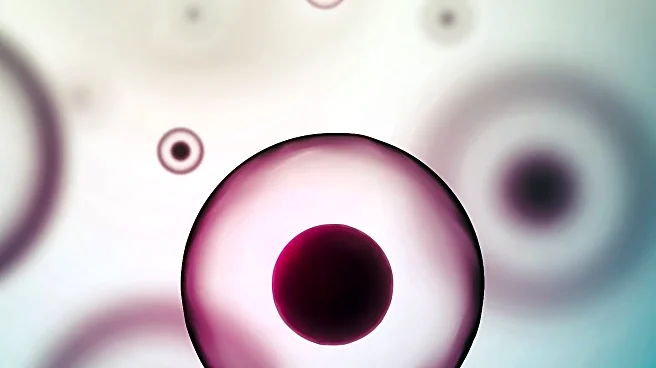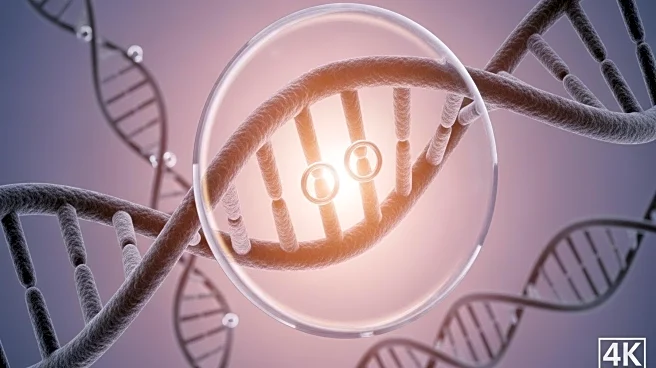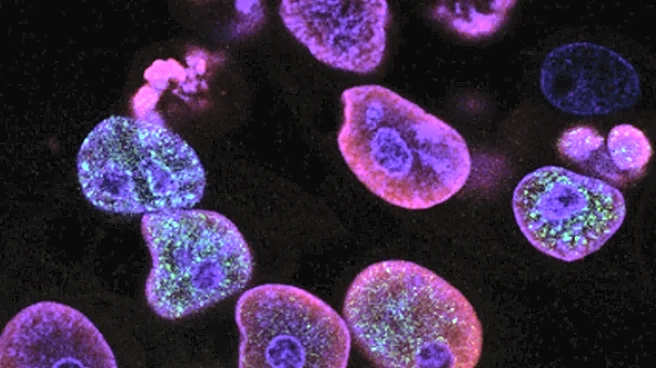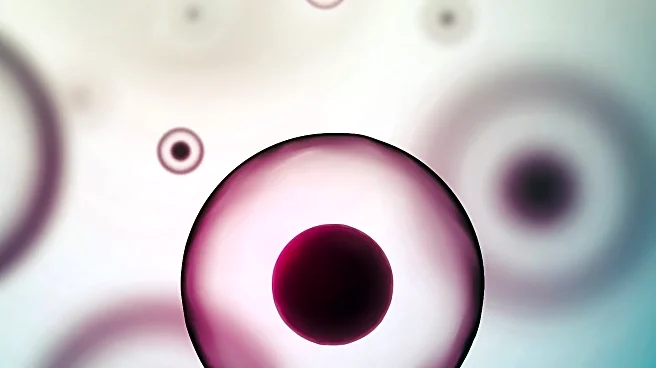What is the story about?
What's Happening?
Recent research has uncovered the role of fumarate in activating the IL-6/JAK/STAT3 pathway in fumarate hydratase-deficient renal cancer cells. Fumarate, a metabolite accumulating in these cells, inhibits the activity of the histone demethylase KDM4C, leading to increased levels of histone 3 lysine 36 trimethylation (H3K36me3). This upregulation triggers the IL-6/JAK/STAT3 oncogenic signaling pathway, enhancing the expression of chemokine CXCL10 and programmed cell death ligand 1 (PD-L1). The findings suggest potential therapeutic strategies involving immune checkpoint blockade combined with STAT3 inhibitors for treating this type of renal cancer.
Why It's Important?
Understanding the molecular mechanisms by which fumarate influences cancer pathways is crucial for developing targeted therapies for renal cancer. The activation of the IL-6/JAK/STAT3 pathway represents a significant step in tumor progression, and the ability to inhibit this pathway could lead to more effective treatments. This research highlights the potential for combining immune checkpoint inhibitors with STAT3 inhibitors, offering hope for improved outcomes in patients with fumarate hydratase-deficient renal cancer.
What's Next?
The study suggests further exploration into the combination of immune checkpoint blockade and STAT3 inhibitors as a treatment strategy. Clinical trials may be necessary to evaluate the efficacy and safety of this approach in patients. Researchers will likely continue to investigate the broader implications of fumarate's role in cancer biology, potentially uncovering new therapeutic targets and strategies.
Beyond the Headlines
The findings contribute to a deeper understanding of the complex interactions between metabolites and cancer pathways, emphasizing the importance of personalized medicine in oncology. This research may pave the way for more precise interventions tailored to the genetic and molecular profiles of individual tumors, advancing the field of cancer treatment.
AI Generated Content
Do you find this article useful?













